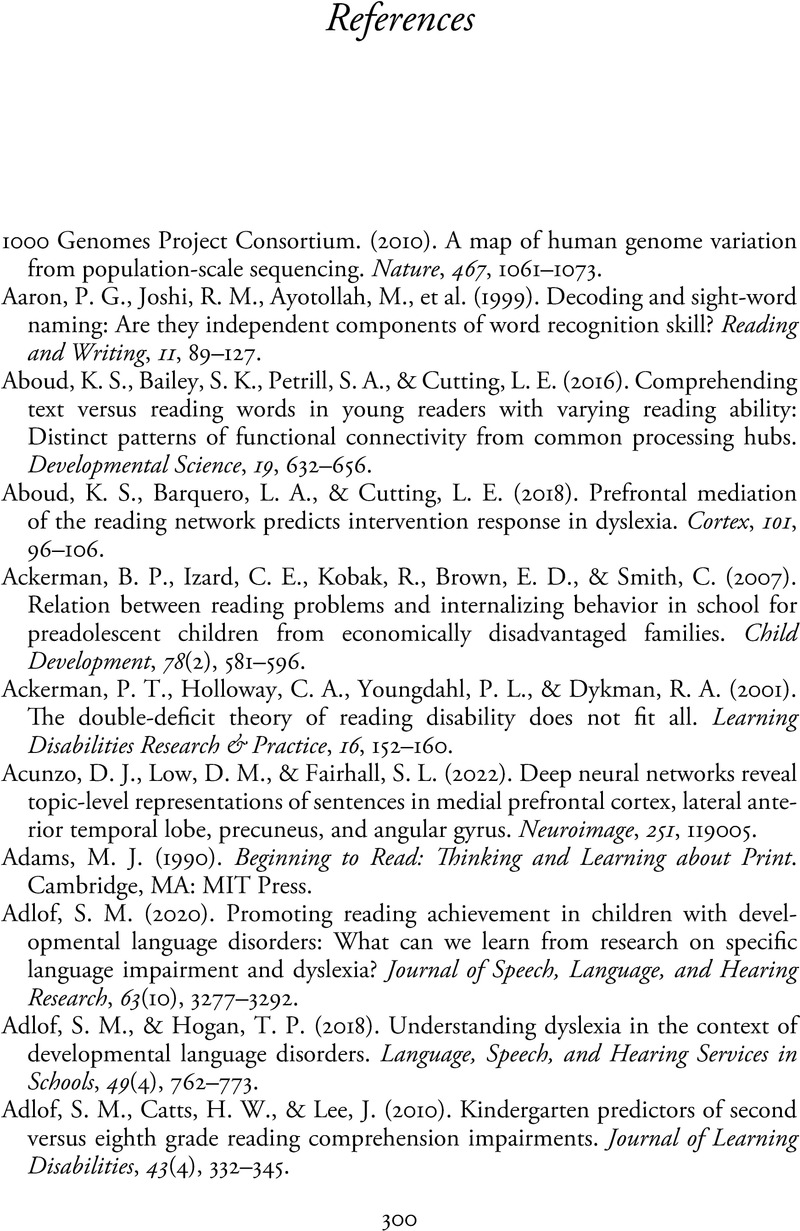Book contents
- The Dyslexia Debate Revisited
- The Dyslexia Debate Revisited
- Copyright page
- Contents
- Figures
- Table
- Foreword
- Preface
- Abbreviations
- Chapter 1 What Is Dyslexia?
- Chapter 2 Explanations at the Cognitive Level
- Chapter 3 The Neurobiological Bases of Reading Disability
- Chapter 4 Assessment, Instruction, and Intervention
- Chapter 5 Dyslexia
- Chapter 6 Conclusions and Recommendations
- References
- Index
- References
References
Published online by Cambridge University Press: 30 March 2024
- The Dyslexia Debate Revisited
- The Dyslexia Debate Revisited
- Copyright page
- Contents
- Figures
- Table
- Foreword
- Preface
- Abbreviations
- Chapter 1 What Is Dyslexia?
- Chapter 2 Explanations at the Cognitive Level
- Chapter 3 The Neurobiological Bases of Reading Disability
- Chapter 4 Assessment, Instruction, and Intervention
- Chapter 5 Dyslexia
- Chapter 6 Conclusions and Recommendations
- References
- Index
- References
Summary

Information
- Type
- Chapter
- Information
- The Dyslexia Debate Revisited , pp. 300 - 423Publisher: Cambridge University PressPrint publication year: 2024
